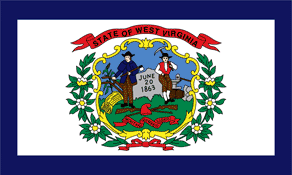West Virginia State Standards for Language Arts: Grade 1

Currently Perma-Bound only has suggested titles for grades K-8 in the Science and Social Studies areas. We are working on expanding this.
WV.RLA.S.1.1. Reading: Students will apply reading skills and strategies to inform, to perform a task and to read for literacy experience by identifying and using grade appropriate essential reading components (phonemic awareness, phonics, vocabulary, fluency, comprehension, written application) and selecting a wide variety of literature and diverse media to develop independence as readers.
RLA.O.1.1.1. Develop a rhythm and rhyme of words (e.g., nursery rhymes, songs, poems, tongue twisters).
RLA.O.1.1.2. Blend and segment the phonemes of most one-syllable words.
RLA.O.1.1.3. Substitute, delete and manipulate beginning and ending phonemes.
RLA.O.1.1.4. Use basic elements of phonetic analysis to decode unknown words:
RLA.O.1.1.4.a. Sound-symbol relationships
RLA.O.1.1.4.b. Beginning/ending consonants
RLA.O.1.1.4.c. Short and long vowel sounds
RLA.O.1.1.4.d. Blends
RLA.O.1.1.4.e. Digraphs
RLA.O.1.1.4.f. Diphthongs
RLA.O.1.1.5. Use basic elements of structural analysis to decode unknown words:
RLA.O.1.1.5.a. Basic prefixes/suffixes
RLA.O.1.1.5.b. Compound words
RLA.O.1.1.5.c. Root words
RLA.O.1.1.5.d. Spelling patterns
RLA.O.1.1.5.e. Contractions
RLA.O.1.1.6. Use a variety of context clues to confirm unknown words (e.g., prior knowledge, reading ahead, reread).
RLA.O.1.1.7. Understand level appropriate sight words and vocabulary (e.g., high frequency words, antonyms, synonyms, multiple meaning words).
RLA.O.1.1.8. Use directly taught vocabulary words in oral and written reading experiences.
RLA.O.1.1.9. Establish purpose for reading (e.g., for information, for pleasure, to identify a specific viewpoint).
RLA.O.1.1.10. Determine and describe how print is organized and read (e.g., author, illustrator, difference between letters, words, sentences, purpose of capitalization or punctuation).
RLA.O.1.1.11. Read familiar stories, poems, rhymes and passages with fluency:
RLA.O.1.1.11.a. Appropriate rate
RLA.O.1.1.11.b. Accuracy
RLA.O.1.1.11.c. Prosody
RLA.O.1.1.12. Use meaning clues to aid comprehension and make predictions about content (e.g., pictures, title, cover, story sequence).
RLA.O.1.1.13. Read first grade instructional level texts and use self-correction strategies (e.g., decoding, searching for cues, rereading).
RLA.O.1.1.14. Use basic comprehension concepts to understand literary and informational texts (e.g., story elements, main idea, sequence, cause and effect, prediction, retelling).
RLA.O.1.1.15. Make text-to-self connections (e.g., events, characters, conflicts).
RLA.O.1.1.16. Construct responses to both literal and interpretive comprehension questions after reading informational or literary text.
RLA.O.1.1.17. Use reading skills and strategies to understand a variety of informational resources to support literacy learning (e.g., environmental print, written directions, signs, labels, electronic resources).
RLA.O.1.1.18. Increase the amount of independent reading to build background knowledge, expand vocabulary and comprehend literary and informational text.
WV.RLA.S.1.2. Writing: Students will apply writing skills and strategies to communicate effectively for different purposes by using the writing process applying grammatical and mechanical properties in writing and selecting and evaluating information for research purposes.
RLA.O.1.2.1. Demonstrate proper manuscript techniques:
RLA.O.1.2.1.a. Correct directionality,
RLA.O.1.2.1.b. Proper writing position,
RLA.O.1.2.1.c. Print upper/lower case letters of the alphabet and numerals with proper form,
RLA.O.1.2.1.d. Demonstrate uniformity in print, and
RLA.O.1.2.1.e. First and last name.
RLA.O.1.2.2. Construct complete sentences in written compositions (e.g., capitalize first word; include a noun and verb, ending punctuation).
RLA.O.1.2.3. Develop a simple story with appropriate sequence (e.g., beginning, middle, end).
RLA.O.1.2.4. Compose written works using appropriate parts of the writing process (e.g., initial attention to planning, drafting, rereading for meaning, some self correction and class/individual publishing).
RLA.O.1.2.5. Identify and apply conventions of spelling in written composition (e.g. letter/sound relationships, high frequency words, transition from phonetic spelling to conventional spelling).
RLA.O.1.2.6. Identify and apply conventions of capitalization in written composition (e.g., days of the week, months of the year, names of people, special places).
RLA.O.1.2.7. Identify and apply conventions of punctuation in written composition (e.g., period, question mark, exclamation mark).
RLA.O.1.2.8. Identify and apply grammar in written composition (e.g., nouns, verbs, declarative, interrogative sentences).
RLA.O.1.2.9. Compose in a variety of forms or genres (e.g., journal writing, written response to literature, writing poems).
RLA.O.1.2.10. Alphabetize to the first letter.
RLA.O.1.2.11. Use a variety of sources to gather information to share thoughts and ideas (e.g., informational books, pictures, charts, graphs).
WV.RLA.S.1.3. Listening, Speaking and Media Literacy: Students will apply listening, speaking and media literacy skills and strategies to communicate with a variety of audiences and for different purposes.
RLA.O.1.3.1. Listen, recite and respond to familiar stories, poems, nursery rhymes, songs and stories with repeated patterns (e.g., retell in sequence, relate information to own life, describe character - setting - plot, engage in creative and dramatic play, imagine beyond the story).
RLA.O.1.3.2. Determine the main idea of messages in a variety of visual media (e.g., pictures, cartoons, weather reports, newspaper photos, visual narratives).
RLA.O.1.3.3. Create a real or imaginary experience with oral and/or visual communication.